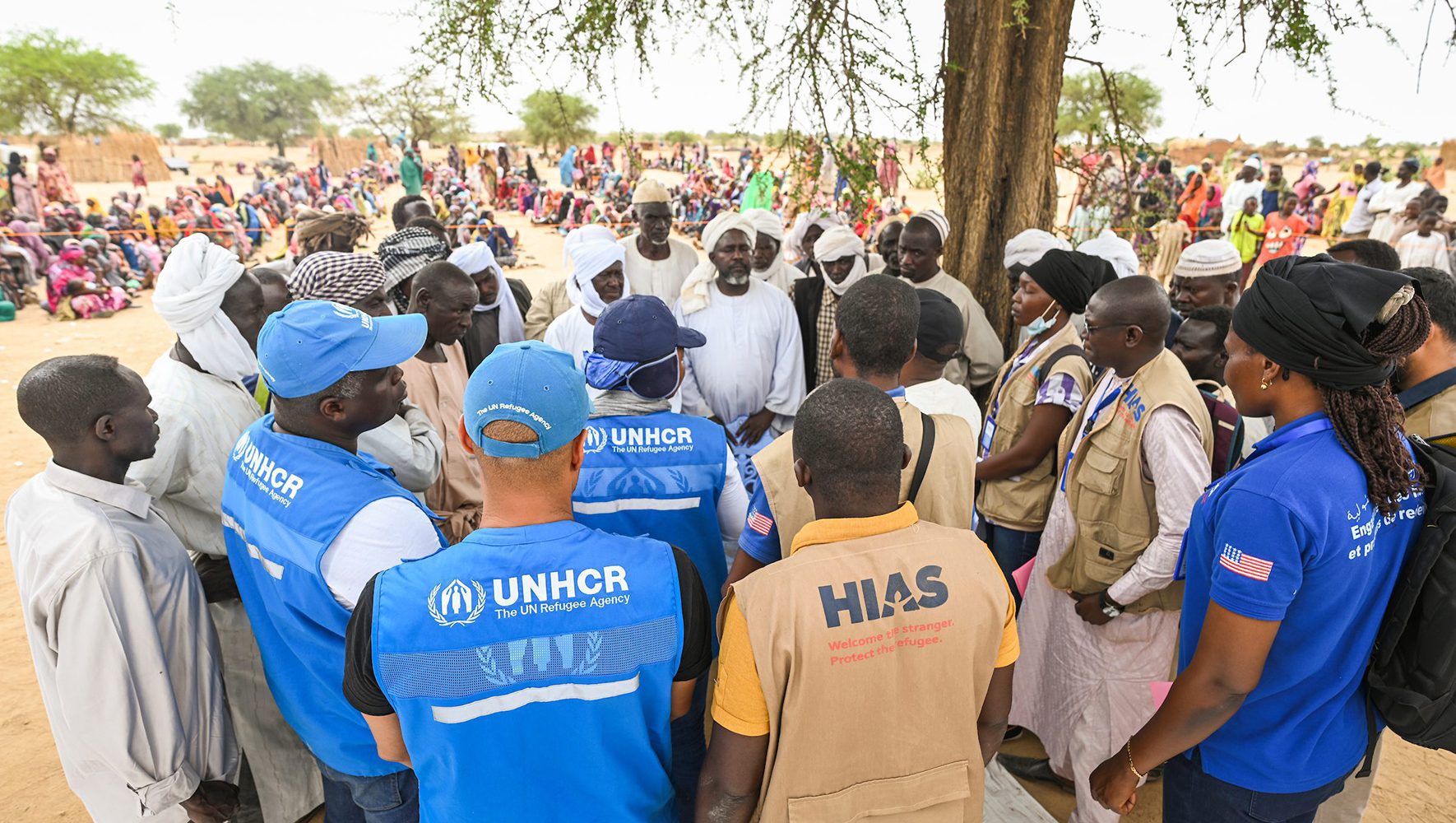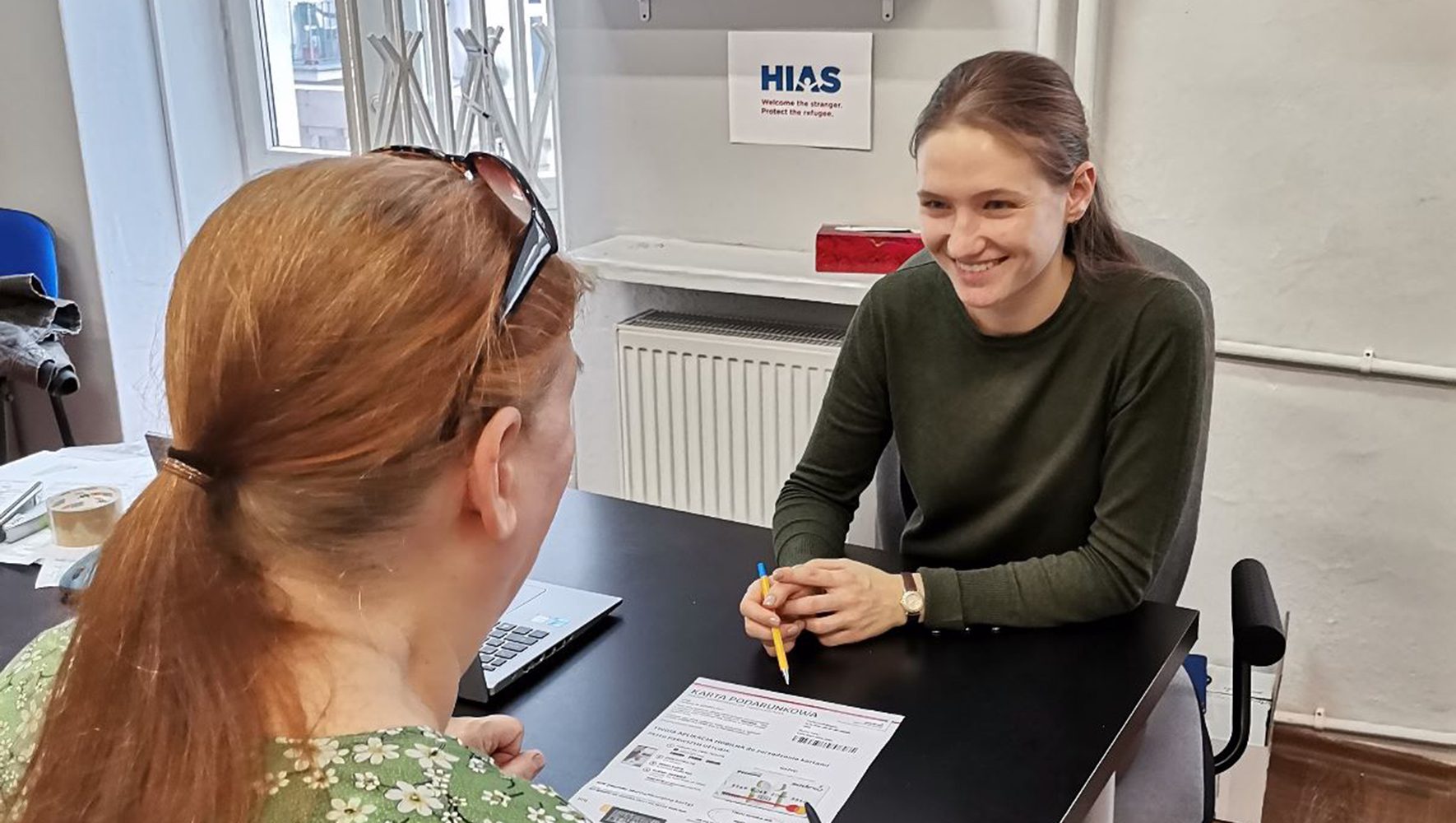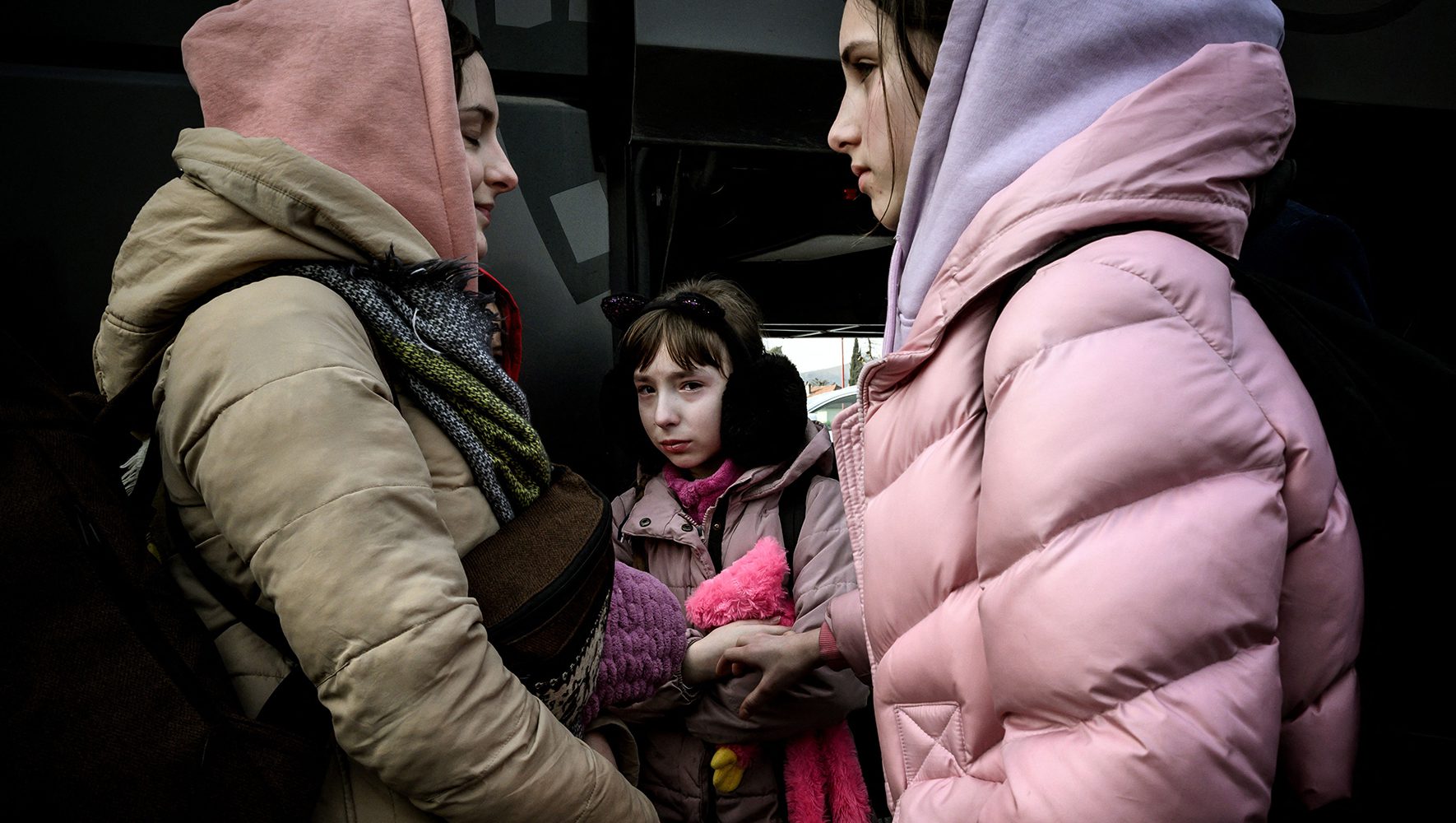Frequently Asked Questions About Refugee Resettlement
By Rachel Nusbaum, HIAS.org
Oct 16, 2015

People are assisted moments after they arrive with other Syrian and Iraqi refugees on the island of Lesbos from Turkey on October 14, 2015 in Sikaminias, Greece. Nearly all of those entering Greece on a boat from Turkey are from the war zones of Syria, Iraq and Afghanistan.
(Spencer Platt/Getty Images)
The crisis in Syria, and the plight of those seeking to escape, has shocked the world. As Europe grapples with its response, many are urging the U.S. to step up. Already, thousands of people have signed a HIAS petition urging President Obama to resettle 100,000 additional Syrian refugees into the United States next year, and to provide aid to the severely underfunded humanitarian efforts abroad. Many more have taken to social media (and to the streets) to express their support for refugees and to urge their governments to do more to protect them.
But what happens to the refugees the U.S. accepts for resettlement here? What does that process look like? A recent (Sept. 2015) State Department briefing on the mechanics of the United States Refugee Admissions Program provides some valuable insight for those newly curious about the world of refugee resettlement. Below are some highlights, presented in Q&A form. The answers, all provided by a State Department official during the briefing, have been lightly edited for clarity and brevity.
Who handles refugee resettlement to the U.S.?
State Department official: The U.S. Refugee Admissions Program, or USRAP, includes the Department of State, the Department of Homeland Security and the Department of Health and Human Services’ Office of Refugee Resettlement. They work with international organizations like the United Nations High Commissioner for Refugees, the International Organization for Migration, a number of nongovernmental organizations as well as U.S. states, cities, private citizens, churches and mosques, and community groups.
How long does it take to process an application?
There are a number of processing requirements within the USRAP that cannot be waived, such as an in-person DHS interview, security checks, and a medical exam, including a TB test. And this is one of the many ways in which our Refugee Resettlement Program differs from a lot of other countries’ resettlement programs. A lot of other countries can do things like waive an in-person interview. They can take a case based on dossier. They do very few security checks in some cases. Those are not options that are available to us. So, because of these very strict requirements that we have and because at any given time we’re processing cases in 70 or more locations worldwide with a limited amount of resources, it currently takes anywhere from 18 to 24 months or even longer to process a case from referral or application to arrival in the United States.
How does the process work for refugees seeking resettlement in the U.S.?
The first important step is either a referral or an application to U.S. Refugee Admissions Program. The vast majority of referrals (about 75 percent) come from UNHCR, the UN Refugee Agency. Another 25 percent gain access through direct applications. We have direct referral programs for U.S.-affiliated Iraqis, Iranian religious minorities, former Soviet Union religious minorities, various categories of Cubans and Central American minors with a lawfully present parent in the United States. Once a case enters the USRAP, whether it’s a referral from UNHCR or a direct application, they are all essentially treated the same once they’re into our system.
Once we receive those applications, the next step is to prepare the applications. This is done by resettlement support centers located around the world. These centers are mostly run by NGOs, not government personnel. This is where case workers are doing things like collecting biographic and other information from applicants so that they can present the files to a DHS officer when they arrive in town to conduct the adjudication.
The next step is adjudication by officers of U.S. Citizenship and Immigration Services from the Department of Homeland Security. Refugees are interviewed in person by USCIS officers, who get on the road and go to where the refugees are. The main purpose of the USCIS adjudication is to determine whether applicants meet the U.S. legal definition of a refugee and are admissible. (The legal definition of a refugee includes having a well-founded fear of persecution based on one of the five protected grounds: race, religion, nationality, political opinion, or membership in a particular social group.)
The next big step is security checks. All refugees undergo multiple security checks in order to be approved for U.S. resettlement. Refugees are subject to the highest level of security checks of any category of traveler to the United States. The screening includes involvement of the National Counterterrorism Center, the FBI’s Terrorist Screening Center, DHS, the Department of Defense and other agencies. At the same time, refugees are undergoing a health screening. All refugees approved by USCIS have to undergo a screening to identify diseases of public health significance such as TB.
Finally, cultural orientation: most refugees attend a three-day class providing information about the United States and what to expect from the resettlement agencies and other things when they arrive.
What about when a refugee makes it through that whole process and they are ready to be resettled to the United States? How does that part work?
All travel is arranged by the International Organization for Migration. The government pays IOM up front for the cost of the air travel, but before departing for the U.S., refugees sign a promissory note agreeing to repay the loan to the U.S. for their travel costs.
We work with nine domestic agencies to resettle refugees in the U.S. (including HIAS). These nine agencies have about 315 affiliates in about 180 communities throughout the United States. Each year, each of these nine agencies and any new agencies that would like to be considered for the program – it’s an open, competitive process – these agencies submit proposals describing their capacity to resettle refugees at each of these affiliates, and that would include everything from staff capacity, how large is the office, what languages do they speak, what sort of special needs cases can they handle, what sort of special relationships might they have with medical centers to handle complex cancer cases or other cases.
Once we’ve collected all that information, reviewed the proposals and usually made a few tweaks here and there and come up with an overall numerical placement plan by location, it’s actually up to the individual resettlement agencies on a weekly basis to determine where the cases are placed. Every week, representatives from each of these nine agencies meet to review the biographic and other information sent overseas to our refugee processing center here in Roslyn to determine where to resettle each refugee. If a refugee has relatives in the United States, he or she or they are likely to be resettled near or with them.
These local domestic resettlement agency affiliates welcome refugees at the airport and begin the process of helping them to be resettled in their new communities. And these resettlement agencies are responsible for providing initial reception and placement services in the first 30 to 90 days after the refugees arrive. That includes finding safe and affordable housing and providing a variety of services to promote early self-sufficiency and cultural adjustment.
The Office of Refugee Resettlement at the Department of Health and Human Services also funds programs for which refugees are eligible up to five years after arrival. So, although the State Department’s role in domestic resettlement is limited to the first 90 days, ORR funding can take over after that.
(For the full State Department briefing on state.gov, click here.)


